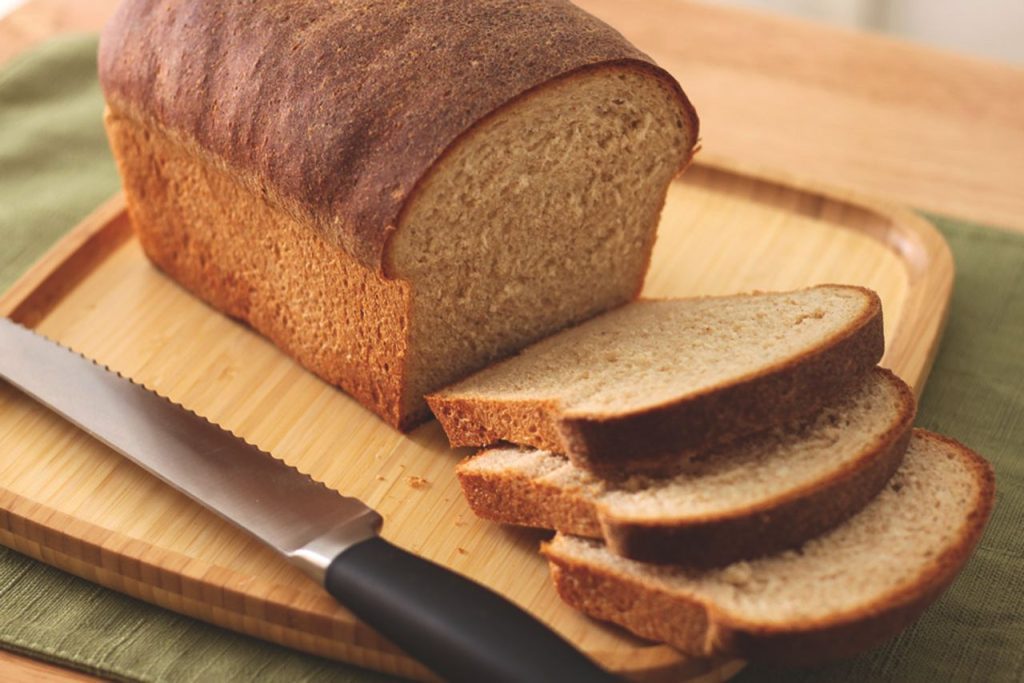Baking bread at home can be a rewarding and enjoyable experience, especially for beginners. With a few simple ingredients and some patience, you can create delicious, fresh bread. Here’s a comprehensive guide to help you start your journey into bread making.

Essential Ingredients and Tools
Ingredients:
- 4 cups (500g) all-purpose flour or bread flour
- 1 1/2 cups (360ml) warm water (about 110°F or 45°C)
- 2 1/4 teaspoons (7g) active dry yeast (1 packet)
- 1 tablespoon (12g) sugar
- 2 teaspoons (10g) salt
- 2 tablespoons (30ml) olive oil (optional)
Tools:
- Large mixing bowl
- Measuring cups and spoons
- Wooden spoon or spatula
- Kitchen scale (optional, but recommended)
- Clean kitchen towel or plastic wrap
- Baking sheet or loaf pan
- Parchment paper (optional)
- Oven
Steps to Making Bread
- Activate the Yeast:
- In a small bowl, combine the warm water and sugar. Stir until the sugar is dissolved.
- Sprinkle the active dry yeast over the water and let it sit for about 5-10 minutes, until it becomes frothy. This indicates that the yeast is active.
- Mix the Dough:
- In a large mixing bowl, combine the flour and salt. Mix well.
- Make a well in the center of the flour mixture and add the frothy yeast mixture and olive oil (if using).
- Stir with a wooden spoon or spatula until the dough starts to come together.
- Knead the Dough:
- Transfer the dough to a lightly floured surface.
- Knead the dough for about 8-10 minutes, until it becomes smooth and elastic. If the dough is too sticky, add a little more flour, a tablespoon at a time. If it’s too dry, add a few drops of water.
- First Rise (Proofing):
- Shape the dough into a ball and place it in a lightly oiled bowl, turning the dough to coat it with oil.
- Cover the bowl with a clean kitchen towel or plastic wrap.
- Let the dough rise in a warm, draft-free place for about 1-2 hours, or until it has doubled in size.
- Shape the Dough:
- Punch down the dough to release the air.
- Transfer it to a lightly floured surface and shape it into a loaf or your desired shape.
- Place the shaped dough onto a baking sheet lined with parchment paper or into a greased loaf pan.
- Second Rise:
- Cover the dough with a kitchen towel or plastic wrap.
- Let it rise for another 30-45 minutes, or until it has doubled in size again.
- Preheat the Oven:
- Preheat your oven to 375°F (190°C).
- Bake the Bread:
- Uncover the dough and place it in the preheated oven.
- Bake for about 25-30 minutes, or until the bread is golden brown and sounds hollow when tapped on the bottom.
- If you have a kitchen thermometer, the internal temperature of the bread should be about 190-200°F (88-93°C).
- Cool the Bread:
- Remove the bread from the oven and let it cool on a wire rack.
- Allow it to cool completely before slicing to avoid a gummy texture.
Tips for Perfect Bread
- Measure Accurately: Use a kitchen scale for precise measurements, especially for the flour.
- Water Temperature: Ensure the water is warm, not hot, to avoid killing the yeast.
- Kneading: Proper kneading develops the gluten, giving the bread its structure and chewiness.
- Proofing: Allow enough time for both rises. Patience is key to achieving a good rise and flavor.
- Oven Steam: For a crispier crust, place a shallow pan of water in the oven during baking or spray water on the oven walls with a spray bottle a few times during the first 10 minutes of baking.
Basic Bread Variations
- Whole Wheat Bread:
- Substitute half or all of the all-purpose flour with whole wheat flour. Whole wheat flour absorbs more water, so you may need to adjust the hydration.
- Herb Bread:
- Add 1-2 tablespoons of dried herbs like rosemary, thyme, or oregano to the flour mixture for an aromatic loaf.
- Cheese Bread:
- Incorporate 1 cup of shredded cheese into the dough for a cheesy twist.
- Garlic Bread:
- Mix 2-3 minced garlic cloves into the dough or brush the top with garlic butter before baking.
- Seeded Bread:
- Add a mix of seeds (sunflower, sesame, flax) to the dough or sprinkle them on top before baking.
Serving Suggestions
- With Butter: Enjoy fresh bread with a pat of butter or a drizzle of olive oil.
- Sandwiches: Use your homemade bread for delicious sandwiches.
- Toast: Toast slices and top with your favorite spreads, such as avocado, jam, or peanut butter.
- Soup: Serve with soups and stews for a hearty meal.
By following these steps and tips, you’ll be able to bake your own bread from scratch, creating a satisfying and delicious addition to your meals. Enjoy the process of learning and experimenting with different variations to find your perfect homemade bread!
